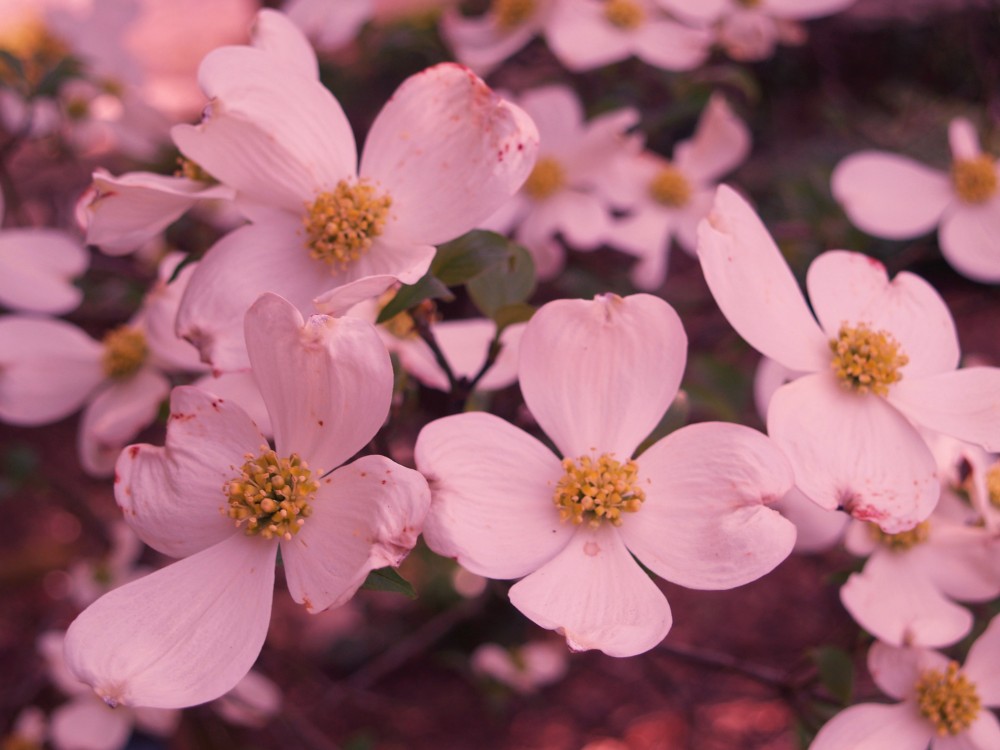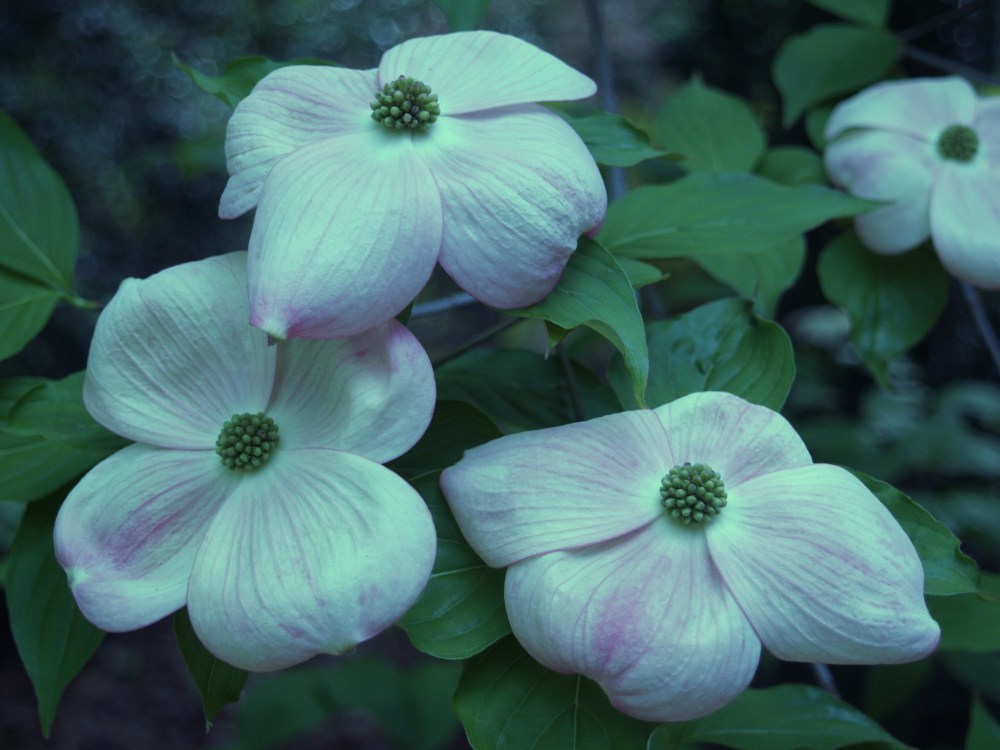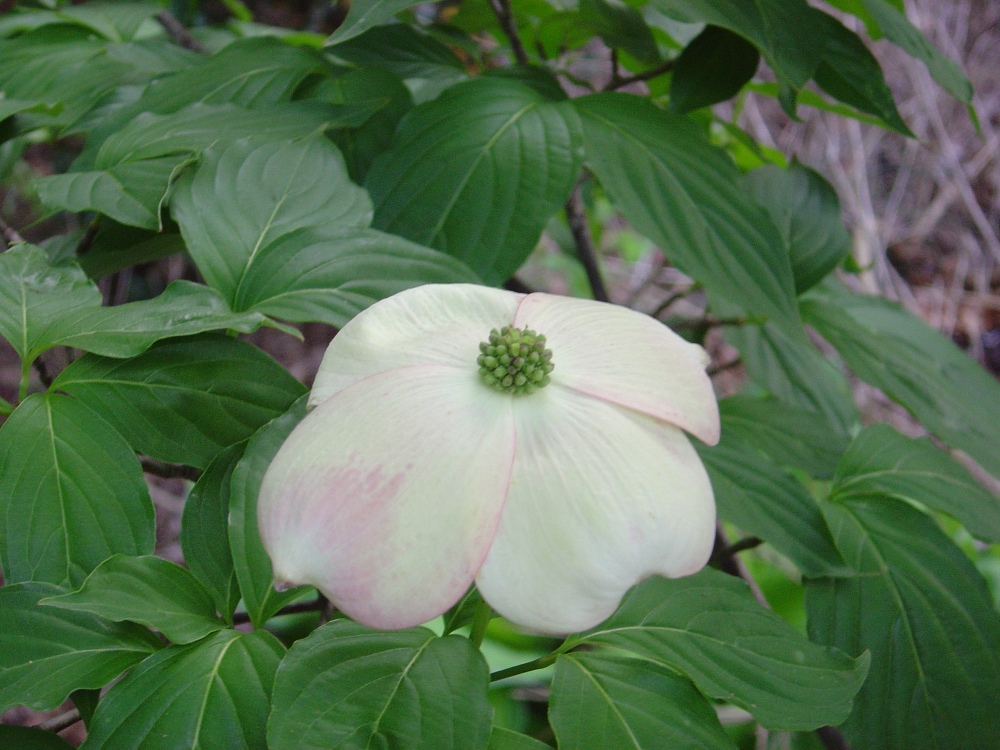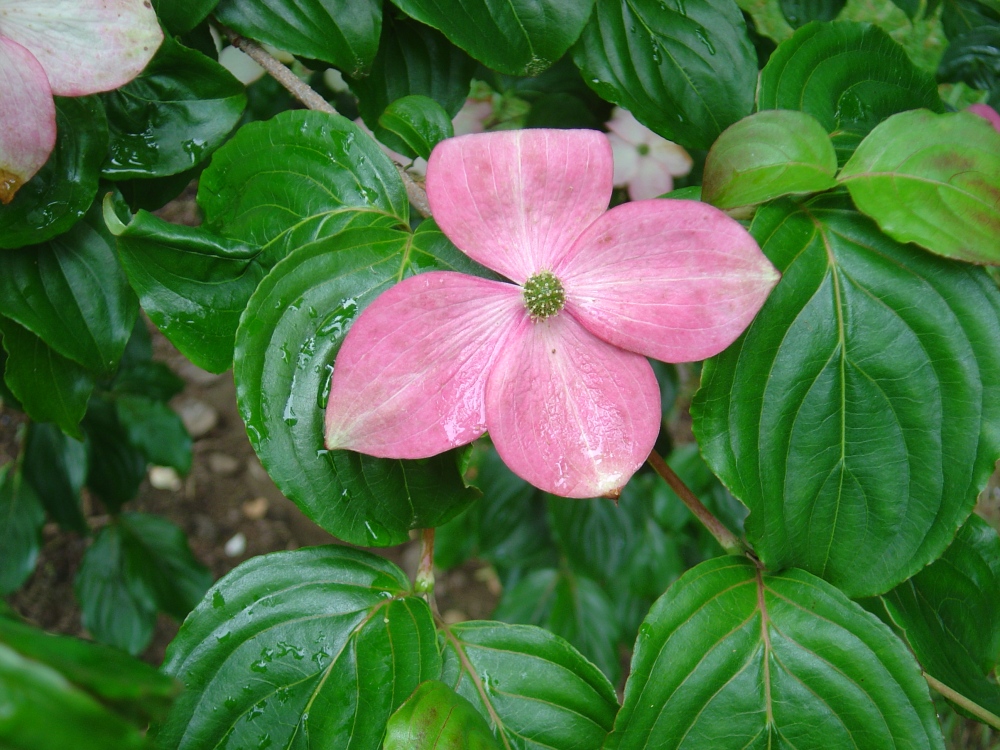Finally, flowers of our native dogwoods (Cornus florida, below) are fading as new leaves emerge. This end date of early May is very typical, but the start date for flowering was pushed forward by a week (or ten days) with the warm temperatures of March. The coolness of early April, and two late freezes did no harm, but resulted in a marvelous and extended season for flowers that persisted at least ten longer than redbuds that began blooming only a few days earlier than the dogwoods.
While hybrid dogwoods ‘Stellar Pink’ and ‘Venus’ are on target to begin flowering as is typical this first week of May, the variegated ‘Celestial Shadow’ (Cornus ‘Celestial Shadow’, below) has been blooming for a week, overlapping with a nearby white flowered native. Similar to ‘Stellar Pink’, with disappointingly sparse flowers in its early years, ‘Celestial Shadow’ has increased numbers of flowers each year, and now the variegated foliage is largely covered by white blooms.
If there is one small regret, it is that when ‘Celestial Shadow’ was planted, prime spaces were taken, and the small tree was shoehorned behind the koi pond between large gold tipped cryptomerias (Cryptomeria japonica ‘Sekkan-sugi’) and the summer flowering ‘Tardiva’ hydrangea (Hydrangea paniculata ‘Tardiva’). Fortunately, this position allows for adequate sunlight, but such a splendid tree deserves a spot where it can be more readily enjoyed. Oh well, such are the gardener’s miseries dealing with an overabundance of treasures.
An unfortunate consequence of areas of overly crowded planting is that branches of ‘Stellar Pink’ (above) become more elevated each year. Now, only a few branches remain at eye level, so flowering must be enjoyed from a distance. Newly emerging flowers this spring have fairly large blotches of pink, though I suspect these will fade to the more typical slight blush of pink as the flowers grow larger.
 I have seen flowers of ‘Stellar Pink’ and the pink flowered Chinese dogwood ‘Satomi’ (above, in my Virginia garden) in the relative coolness of coastal Oregon (below), and here both exhibit true pink flowers, whereas in Virginia there is only a trace on the otherwise white blooms. While the pink flowered native dogwood (Cornus florida ‘Rubra’) displays its color accurately, the hybrid and Chinese dogwood are slightly disappointing by their lack of pinkness. However, both are vigorous in growth and resistant to the numerous diseases that plague our native dogwoods.
I have seen flowers of ‘Stellar Pink’ and the pink flowered Chinese dogwood ‘Satomi’ (above, in my Virginia garden) in the relative coolness of coastal Oregon (below), and here both exhibit true pink flowers, whereas in Virginia there is only a trace on the otherwise white blooms. While the pink flowered native dogwood (Cornus florida ‘Rubra’) displays its color accurately, the hybrid and Chinese dogwood are slightly disappointing by their lack of pinkness. However, both are vigorous in growth and resistant to the numerous diseases that plague our native dogwoods.
As I do each year, I recommend planting at least one of each. Our exceptional native dogwood should not be overlooked, but by planting the native along with several hybrids and Chinese dogwoods, flowering might extend from early April until June.
I had limited garden space in my previous home that backed up to woods with native dogwoods. However, the dogwoods were slowly being strangled by wild rose Scotch briar climbers reducing the spring display. So, I planted 2 Kousa dogwoods (heeding their disease resistance) that put on a spectacular display each spring.One was close to the cement driveway and if only I had known then that the “berries” were edible! I would not have chastised myself so much for the mess they made.
Location, location, is something that some of us in our love of planting do not always carefully consider. I empathize with you Dave.
The English gardener.
While a Kousa dogwood at the wood’s edge flowers and sets large crops of berries, another that is further under the tree canopy does not flower at all. It was a rescue project, and it grows fine so it’s not too big a deal. Certainly, location makes a difference.